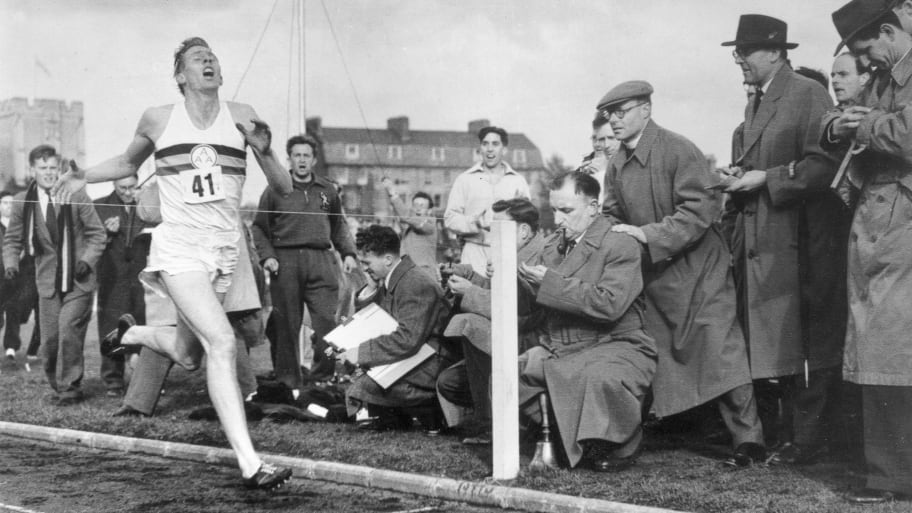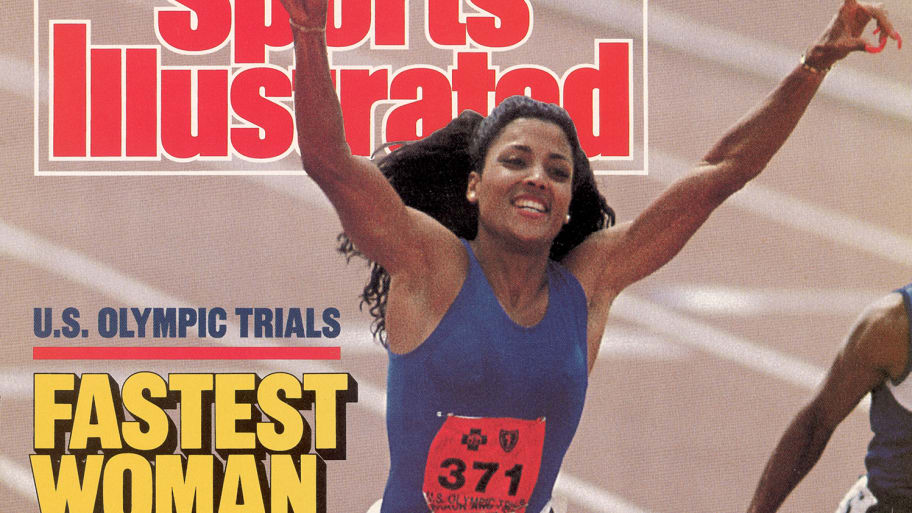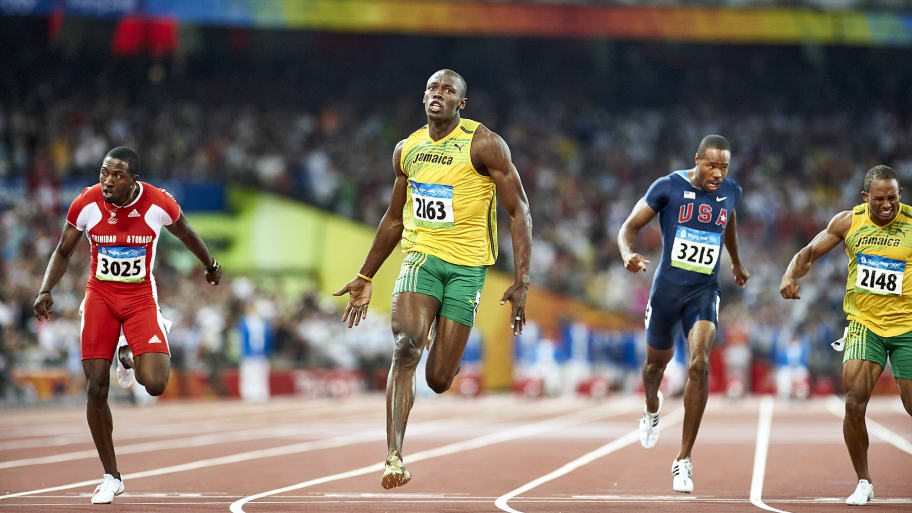
Even a species of eight billion has outliers, and on the night of Feb. 11, 2024, one of them was at the wheel of a Toyota Premio on Eldoret-Eldama Ravine Road in Kenya, heading toward Eldama Ravine. Kelvin Kiptum had big plans, for himself and for the human race. He intended to break the two-hour barrier in the marathon, and he was so confident that he had already named the time and place: April 14 of this year, at the Rotterdam Marathon.
It was a striking statement, in part because it was so believable. The 24-year-old Kiptum was the latest in a line of extraordinary distance runners from Kenya, a country that has taken an ancient race and made it its own. Last October, he ran the Chicago Marathon in a time of 2:00:35, breaking fellow Kenyan Eliud Kipchoge’s world record by 34 seconds. With its flat course, the Rotterdam race is conducive to fast times. If Kiptum could shave 36 seconds off his own record there, his time and his legacy would both begin with a 1.
“I would like to grow further,” he said last December, “and so, inevitably, break the barrier.”
For as long as humans have existed, we have competed. But for as long as we have chronicled the dreams of the young, we have told tragic stories of premature deaths. Kiptum’s Toyota was traveling at a high speed, less than a mile from where Somalia-born Dutch runner Abdi Nageeye had completed a training run earlier that day, when it veered off the road, into a ditch, and then into a tree, killing Kiptum and his coach, Gervais Hakizimana.

As word of Kiptum’s death spread, there were rings to the grief: His family’s, his nation’s and his sport’s. In her devastating eulogy, Kiptum’s wife Asenath Rotich said, “My dear love, I can’t learn how to say goodbye to you.” Kipchoge mourned “an athlete who had a whole life ahead of him to achieve incredible greatness.”
Perhaps the saddest part of mourning the young is that we cannot even really know what we have lost.
Seventy years ago, Sports Illustrated debuted, and our first feature-length story was a gem. Writer Paul O’Neil chronicled a race between the only two people who to that point had ever run a four-minute mile: England’s Roger Bannister and Australia’s John Landy. “The world of track has never seen anything quite to equal the ‘Mile of the Century,’ ” O’Neil wrote in the Aug. 16, 1954, issue of SI. “It will probably not see the like again for a long, long time.”
Bannister won, but O’Neil’s prediction proved incorrect: By the end of the 1960s, 38 men would run the mile faster than Bannister and Landy ever did. As training methods improved and financial incentives increased, sports fans came to assume that every breathtaking feat would be topped by another. In our 1978 story on Sportsperson of the Year Jack Nicklaus, writer Frank Deford wrote of the year’s predictable outcomes. Along with championships for Nicklaus, the Yankees, the Cowboys, Kentucky basketball and Notre Dame football, the piece included this headline: SWIMMING MARKS FALL.

Swimming records still fall, but not as often as they once did; seven current men’s world records were set in 2009. Track and field records, meanwhile, are like houseguests who arrive for a party and end up paying rent.
Florence Griffith Joyner set the women’s 100-meter record of 10.49 in 1988. The men’s 100 mark has stood since Usain Bolt ran a 9.58 in 2009. Four of the five fastest men in history have retired, and the fifth (Jamaica’s Yohan Blake) announced last year that the 2024 Olympics would be his final competition.
The two longest men’s jumps in history occurred in 1991 and ’68. Eight women have long-jumped 24 feet, but none since 2004. The men’s high jump record is 31 years old; the women’s record is 37. The men’s 800-meter record has stood for 12 years.
Mile races are rare these days; 1,500 meters is the commonly run distance. Morocco’s Hicham El Guerrouj set the 1,500 world record of 3:26.00 in 1998. Afterward, he dropped to his knees and kissed the track in Rome’s Stadio Olimpico as other runners mobbed him. “I expect these things,” said El Guerrouj of his run. “I came with the intention of breaking the record.”
He left, surely, with the intention of breaking it again. El Guerrouj was only 23 at the time. He would go on to win three more world championships and two Olympic gold medals. But he would never again run a 1,500 as fast as he did that day—and neither has anyone else.

That is a long time without progress. When El Guerrouj set his 1,500 record, Amazon.com only sold books and compact discs. The women’s 1,500 record has been almost as stagnant: Kenya’s Faith Kipyegon broke it last year and again earlier this summer, but since 1993 the mark has dropped by just 1.42 seconds.
We pause here to acknowledge that we can never say with certainty whether any athlete used performance-enhancing drugs. It’s possible that any long-standing record was obtained through cheating. Even so, there is a clear pattern here.
Bannister’s sub-four-minute mile is an enduring symbol of 20th-century achievement—analogous, in a way, to Neil Armstrong stepping foot on the moon. It expanded the very concept of human possibility. Seven decades after Bannister’s breakthrough, are we approaching our athletic limits? And is there any achievement in sports that can capture our imagination the way the four-minute mile did?
Travel around the sporting landscape and you will inevitably find athletes doing something unprecedented. The world has never seen anybody quite like Shohei Ohtani, Caitlin Clark or Victor Wembanyama. Whatever your feelings on the Michael Jordan–LeBron James debate—and by all means, keep them to yourself—James is clearly better at age 39 than Jordan was.
The improvements, though, are almost all in the areas of sport-specific skills and longevity. Larger athletes are doing what smaller athletes once did. Women are doing what society told them, for years, they could not do. Advances in training and medicine mean athletes’ peaks are longer.
Rawer measures of athletic greatness tell a different story: We are not pushing the limits of human athleticism as much as we are congregating around them.
The fastest woman of 1983, Evelyn Ashford, ran 100 meters in 10.79 seconds. The fastest woman of 2023, Shericka Jackson, ran it in 10.65 seconds. But in 1983, only four women ran the 100 in less than 11 seconds. In 2023, 26 women did. The point holds for more subjective evaluations as well. No current NBA player is an appreciably better athlete than Jordan, but the league’s 30th-best athlete today is clearly superior to its 30th-best athlete in 1990.

The history of the fastball could be instructive. Thanks to a better understanding of biomechanics and an emphasis on velocity, there are many more pitchers throwing 100 mph than there were 40 years ago. But the top speed of the hardest fastballs has not really changed. Bob Feller is believed to have thrown around 100 mph in 1940, and Nolan Ryan threw with as much velocity (or more) in the ’70s as Pittsburgh Pirates phenom Paul Skenes does today.
Dr. Neal ElAttrache, surgeon to the stars, points out that running “must be more consistent with our nature and our physiology” than throwing, because runners do not suffer as many catastrophic injuries as pitchers. Does this mean that runners will keep running faster, while throwers are limited by how much their body can take?
ElAttrache says, “We will always find new ways to make the body work better and more efficiently. But at what cost?” The desire to throw hard so often, especially at a young age, has sent many pitchers to ElAttrache’s operating table: “People are training to maximize effort, with no regard to tissue endurance.” Runners don’t tear ligaments as often as pitchers, but their bodies can only handle so much stress, especially at long distances. This is why, as far back as 1991, Mayo Clinic physiologist Michael Joyner tried to figure out how fast a man could possibly run a marathon. His prediction: 1:57:58.
“Going into lactic acidosis … basically, you reach physiologic exhaustion, where your muscles just can’t perform,” ElAttrache says. “It’s more than just mind over matter: [You can’t] ignore the pain.”
Yet ElAttrache also says, “I think the upper limit will keep on advancing.” Sports at the highest level, are, by definition, a celebration of exceptions. The only reason Tiger Woods’s achievements seem possible today is because he achieved them. Bolt changed our idea of how fast a 6' 5" man could run.
Perhaps the next generation will produce a sprinter who breaks Bolt’s records. But if that happens, we will be interested because of the man he beats, not because of some magically round number on the clock. Tom Brady’s case for being the best football player ever began when he won more Super Bowls than Joe Montana. Most milestones that capture our attention now—not long ago, we were eagerly anticipating Woods’s pursuit of Jack Nicklaus’s record of 18 majors—are not simple measurements of time and space. They are achievements that surpass the legends of the past. But still: Almost everybody has either run a race or knows somebody who has. A sub-two-hour marathon would capture our imagination, wouldn’t it?

In the entire history of humanity, there have been two constants: Most of us suck at math. This may explain why we are drawn to big, round numbers. They are easy to digest. Highway speed limits are not 72.3 mph, and people did not wonder if humans could run a 3:59 mile. To most people, going from a 2:00:35 marathon to 1:59:59 sounds relatively easy. Thirty-six seconds? That’s not even enough time to microwave a breakfast burrito.
But Simon Angus, a computational scientist at Monash University in Melbourne, Australia, and a recreational runner, understands the race and the math better than most. He says 36 seconds is much longer than we think. Consider that, at the men’s 1,500-meter race at the Tokyo Olympics, less than one second separated the gold and bronze medalists. Kiptum would have had to cut more than one second off each mile for 26 straight miles. Since 1967, the marathon record has fallen by around 9.5 seconds per year.
Running 26.2 miles is brutally difficult, especially under the conditions required to set a record. (In 2019 Kenya’s Kipchoge actually did run an exhibition marathon in 1:59:40, but he was aided by pacers who were strategically placed to improve his aerodynamics, along with a pace car and constantly available nutrition, so his time did not count.)
Angus has created models to predict future marathon records for men and women. (He proposes 2:10 as the women’s equivalent to the magical two-hour barrier; the current women’s record is 2:11:53 for a mixed-gender race and 2:16:16 for a women-only race.) Before Kiptum’s record run in Chicago, Angus’s model estimated that the first sub-two-hour marathon would come in 2032. After Kiptum’s 2:00:35, that prediction moved up, but Angus says that “we’re still three or four years away … we should expect to see increasing performance improvements, but a diminishing marginal rate. And that’s what makes hitting that two-hour barrier really hard.” He thinks men will top out (or bottom out?) at around 1:56, and women at around 2:05.
“Even if we go sub-two, there’s still like, four minutes of performance on the table,” Angus says. “Having just described how hard it is to get 30 seconds, you can imagine it’s gonna be a really long, long time till we hit those limits.”

It is important to note here that Angus’s model did not predict who would break the record—just that somebody would. In a sense, it assumes that we are all potential marathoners.
Thinking about human achievement in this way can seem cold. Imagine, for example, a societal model that treats Martin Luther King Jr. or Abraham Lincoln as data points instead of people. But it also provides a guard against manipulating the model to fit our preconceptions. Angus’s model accounted for Kiptum’s time, but not for the possibility that he was a generational talent, the Bolt of the marathon. And so it does not take into account Kiptum’s death.
The Rotterdam Marathon went on as scheduled, on April 14. Nageeye, the runner who had been training near the site of Kiptum’s accident, won it. His time was 2:04:45, just three seconds ahead of Ethiopia’s Amedework Walelegn. What Kiptum might have achieved will always be one of his sport’s saddest of what-ifs. Coe, now president of World Athletics, told BBC Sport: “For sure he would have broken [two hours]. It would have been Bannister and Edmund Hillary, both of them, wrapped into one.”
Perhaps. Or perhaps, like El Guerrouj, Kiptum would have never broken the record again. It is possible another marathoner will eclipse Kiptum soon. It is also possible his standard will last for decades. Kenyans have a saying: “The water of the river flows on, without waiting for the thirsty man.” Kelvin Kiptum was laid to rest at his family farm in Naiberi, with a world record to his name, in a country that had followed his every step.
This article was originally published on www.si.com as Have We Reached Our Athletic Limits?.







